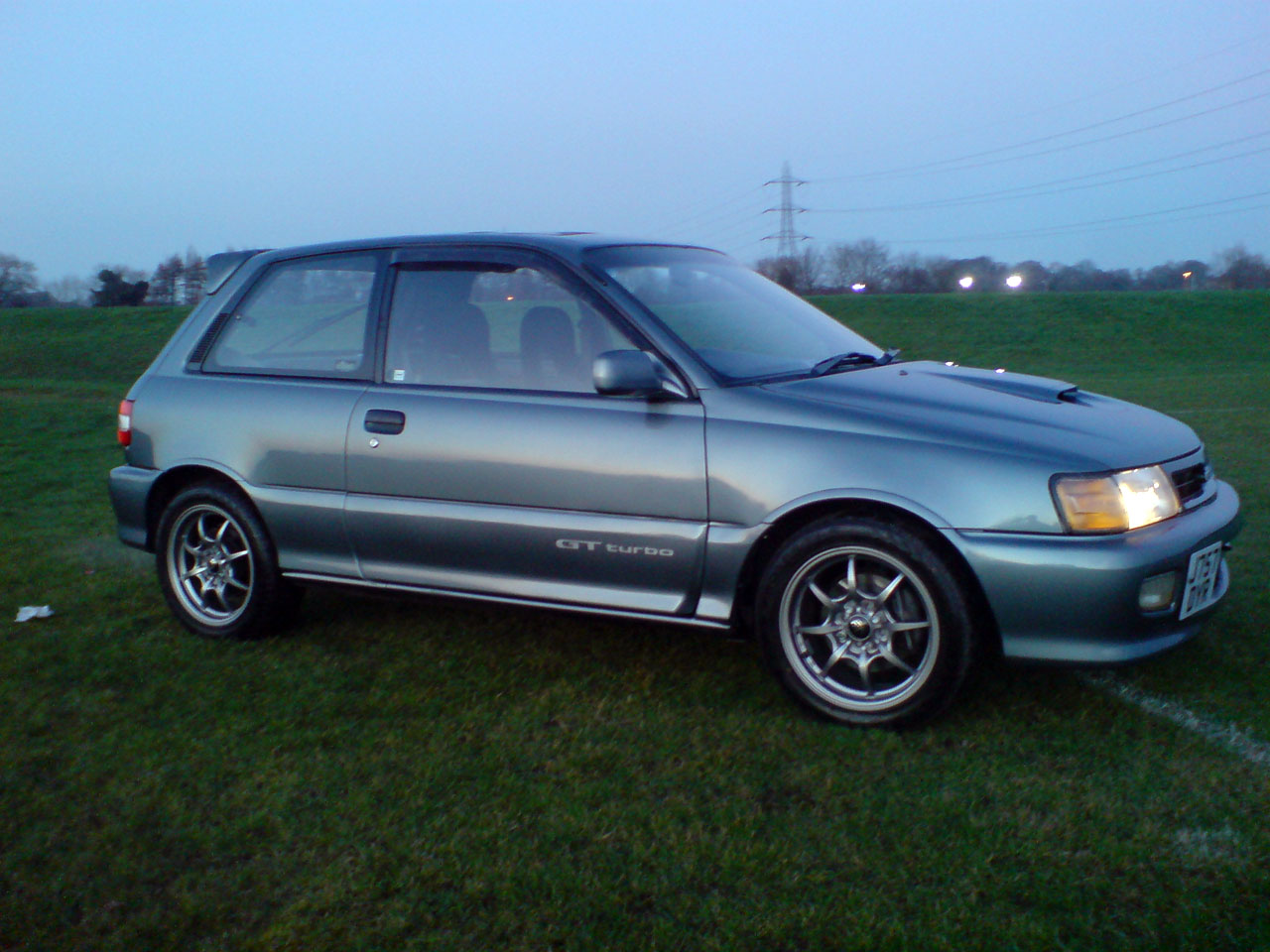

Meanwhile, the suspension was retuned with MacPherson struts at the front and a torsion beam rear, and braking performance was improved with larger ventilated discs and drums respectively. However with a lower resistance body to pull along, the new model’s fuel consumption at higher speed actually improved. The carburetted 12-valve 1E engine and five-speed gearbox was carried over unchanged, offering brisk performance and the promise of superb reliability (the Starlet had consistently topped European reliability records).
#Toyota starlet gt turbo 1995 driver
It was more ergonomic too, with the switches and controls up to 75mm nearer to the driver and arranged more logically. The monocoque bodyshell was extremely rigid and comprised of 82 per cent galvanised steel, while inside the rounded instrument panel looked cutting-edge compared to the angular appearance of the previous model. In fact, quality was one of the primary watchwords used throughout the development of this new-generation Starlet, making it feel like a much more expensive, though equally functional, car. If the 70-series Starlet had an air of practical utilitarianism inside, then the 80-series led by chief engineer Yuuichi Sorimachi reversed that with much higher quality fabrics and materials. Front disc brakes were standardised across the range, and Starlet became the first Toyota passenger car to employ highly responsive rack-and-pinion steering. The front suspension inherited the predecessor’s MacPherson strut and coil spring setup, while the rigid rear suspension was switched from leaf springs to a four-link coil spring system. Transmission choices remained the same as before. Just one 1.3-litre engine was available in Japan, but in other markets the range also included 1.0-litre and 1.1-litre options from the same K-series family. Like most competitors it was available in three- and five-door body styles, but the Toyota Starlet differentiated itself in a key way by retaining a front-engine, rear-wheel drive layout. The new Starlet (frequently identified as the 60-series from its KP60 chassis code) became Toyota’s entry-level model, following the two-box hatchback design that had become the global standard for compact cars at the time.

This evolution from trim level to standalone model set a precedent that was later copied in the transformation of the Celica Supra into the Supra sports car. I would recommend these little pocket rockets, fuel consumption is very good when you're not flat to the mat all the time!! They are VERY easily tunable, good tyres good suspension set up and they can take bends very well.In February 1978 the Publica and Publica Starlet lines were consolidated into the new Toyota Starlet range, and while the longstanding Publica name was now discontinued its legacy continued with a ‘P’ designation in the chassis code. It's a very very quick starlet and it puts Type R's to shame. And since its been running 1 bar boost and not one thing wrong. There was quite a few modifications done when I purchased the car:Īll I've done since is added a HKS Actuator, I got that last year. Then came along my current GT Advance Turbo. This could have been sorted with some good coilovers, however, but I got rid of it. My first, was a 1993 square lamp GT, was quick, but did NOT like the bends one bit. I've had this car for two years now, and so far its my second GT Turbo.


 0 kommentar(er)
0 kommentar(er)
